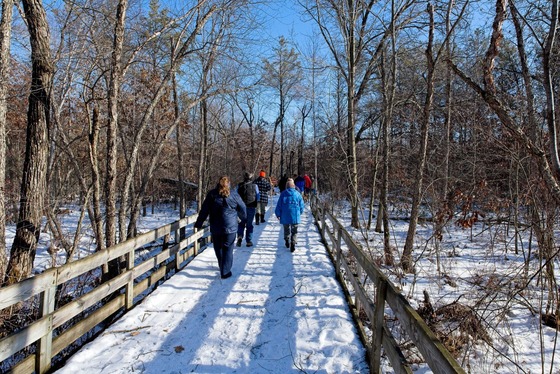Practice Ice Safety On All Waterbodies This Winter
Changing Temps Make Ice Unpredictable
MADISON, Wis. – The Wisconsin Department of Natural Resources (DNR) urges the public to practice ice safety on all of Wisconsin’s waterbodies and remember that no ice is safe ice.
Frigid overnight temperatures often leave a thin layer of ice across smaller bodies of water, but that ice is not strong enough to support the weight of a person or machine.
Temperature swings, strong winds, currents, underground springs feeding lakes and rivers vary widely across Wisconsin, and even across a given lake or river. These factors and more are why no ice is ever considered safe, especially not this early in the season.
Get Ice Status From Local Sources
The DNR does not monitor ice conditions. If your plans include access to or use of an ice-covered waterbody, contact your local fishing clubs, bait shops or outfitters for ice conditions.
“These places routinely check ice conditions and can give you the best and most current conditions,” said Holsclaw. “If you can plan your outing without any travel over ice, do it. And if you are going to be on some ice, let someone know your plans and follow them.”
Conditions Vary On Waterbodies
Each waterbody can have its own characteristics. Check if the lake has inlets, outlets, narrows that have currents or is spring-fed, all of which can thin the ice. Some smaller lakes can have aerators that are run throughout the winter, either covering a large area towards the center of the lake or may have smaller aerators placed by private property landowners adjacent to their shore and piers.
It is equally as important to stay alert for pressure ridges or ice heaves. These can be dangerous due to thin ice and resulting open water. They are often created, move or grow with changes in temperatures and high winds. Pressure ridges and ice heaves can happen on Wisconsin’s largest lake, Lake Winnebago, a popular home to sturgeon spearers, and the Bay of Green Bay.
Ice Safety Basics
Here are a few basic ice safety tips to remember:
- Carry a cell phone, and let people know where you are going and when you’ll return home.
- Wear proper clothing and equipment, including a life jacket or a float coat, to help you stay afloat and to help maintain body heat.
- Wear ice creepers attached to boots to prevent slipping on clear ice.
- Carry a spud bar to check the ice while walking to new areas.
- Carry a few spikes and a length of light rope in an easily accessible pocket to help pull yourself – or others – out of the ice.
- If you fall in, remain as calm as possible. While attempting to get out of the water, call for help. Anyone who attempts to rescue you should use a rope or something similar to avoid falling through themselves.
- Do not travel in unfamiliar areas or at night.
Have a plan in place noting where you will be and when you plan to return. Along with leaving a written note of your plans, keeping a charged cell phone is also recommended.
Check out the DNR’s Ice Safety webpage for more information on staying safe on the ice, including tips for creating ice claws and what to do if you fall through ice.
NOTE: This press release was submitted to Urban Milwaukee and was not written by an Urban Milwaukee writer. While it is believed to be reliable, Urban Milwaukee does not guarantee its accuracy or completeness.
Mentioned in This Press Release
Recent Press Releases by Wisconsin Department of Natural Resources
DNR Confirms CWD in Wild Deer in La Crosse County
Dec 22nd, 2025 by Wisconsin Department of Natural ResourcesBaiting And Feeding Ban Extended























